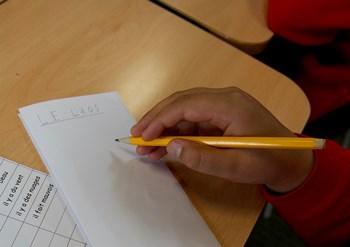Marking and Presentation
Marking and Feedback
At Joseph Hood, we believe that marking and feedback are powerful tools for learning. They are not just about correcting mistakes, but about guiding each child to recognise their successes, reflect on their progress and understand their next steps.
Our approach is designed to build children’s confidence, motivate them to aim high, and help them become reflective, independent learners. By keeping feedback purposeful and timely, we ensure it has the greatest impact on learning while avoiding unnecessary workload for pupils or staff.
What this looks like in practice:
-
Feedback is given in the moment wherever possible, so children can act on advice straight away and make visible improvements in their learning.
-
Teachers highlight strengths and areas to develop, using a consistent approach that pupils understand and respond to.
-
Dedicated 'purple pen' time allows children to reflect and respond to marking, taking ownership of their progress.
-
Regular “deep marking” in writing, maths and science gives more detailed feedback, setting challenges that stretch thinking and celebrate effort.
-
Pupils are encouraged to self-assess, ask questions and evaluate their own work, developing resilience and responsibility for their learning.
By placing feedback at the heart of our teaching, we create a culture where mistakes are seen as opportunities, success is celebrated, and children know that their effort and progress are valued.
Handwriting
We place a strong emphasis on handwriting because we know that clear, fluent writing is a foundation for success across the curriculum. When children can write confidently and legibly, they are free to focus on the content of their ideas, rather than the mechanics of forming letters.
At Joseph Hood, handwriting is not just about presentation - it is about giving children a tool for learning, communication and self-expression. A consistent, daily approach across the school ensures that every child has the chance to develop this important skill.
Our handwriting journey:
-
In Reception, children are encouraged to develop fine motor control and posture through engaging activities, before moving on to correct letter formation using Read Write Inc. guidance.
-
In Key Stage 1, pupils practise a cursive style that promotes flow and consistency.
-
From Year 2 onwards, children begin to join letters, gradually developing speed and fluency.
-
By Year 3, all pupils write in pen, using agreed school handwriting pens to encourage pride in presentation.
Why this matters:
-
Handwriting builds independence: fluency allows children to capture their thoughts and learning more efficiently.
-
Handwriting fosters pride: neat, consistent work helps children take ownership of their learning and achievements.
-
Handwriting supports wider literacy: linking spelling and handwriting practice strengthens both skills.
Staff model high expectations at every opportunity, and additional support is provided where needed, so that every child - left- or right-handed, confident or developing - can achieve a clear, confident style.
By making handwriting a daily priority, we give children not only a lifelong skill, but also the confidence and pride that come with presenting their ideas clearly to the world.

